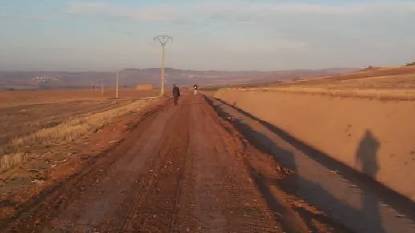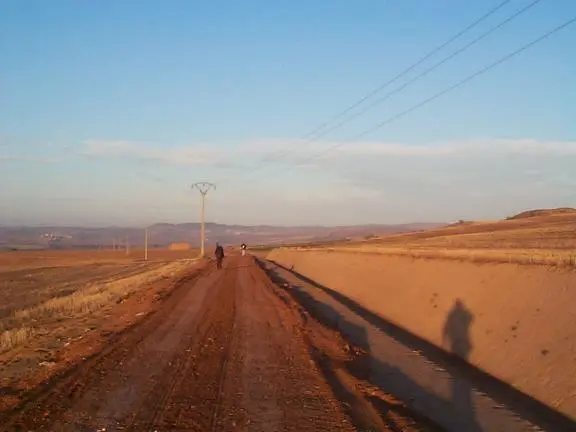
Camino Francés: Los Arcos to Logroño - Stage 7
Posted: | Updated:
Reading time: 13 minutes
Camino Francés: Los Arcos to Logroño - Stage 7
Posted: | Updated:
Reading time: 13 minutes
By: Simon Kemp, Editor
The route from Los Arcos to Logroño is a relatively flat and straightforward section of the Camino Francés , covering a distance of approximately 28 kilometers. The terrain is mostly flat, with some gentle slopes and a few steep descents. Pilgrims will traverse through beautiful countryside, including vineyards, olive groves, and fields of sunflowers. The area is known for its wine production, particularly the La Rioja region. Along the way, pilgrims will encounter several small towns and villages, including the historic town of Viana, which is situated on a hilltop with stunning views of the surrounding countryside.
Map of Los Arcos to Logroño
Departure point: Los Arcos
Los Arcos is a charming town situated in the heart of the Navarre region, along the famous Camino de Santiago pilgrimage route. Despite being a popular destination for tourists, it retains its traditional charm and laid-back atmosphere, making it a wonderful place to visit.
Location and History
Nestled amidst rolling hills and scenic countryside, Los Arcos was founded in the 12th century by the Knights Templar. It played an important role in the defense of the region and was a strategic location on the Camino de Santiago. Over the centuries, the town has preserved its historic character and is now home to a number of stunning landmarks and monuments.
Points of Interest
Los Arcos is a town steeped in history, and visitors can explore numerous landmarks and monuments that bear witness to its fascinating past. The Church of Santa Maria, a magnificent Gothic-style church dating back to the 13th century, is one of the most impressive landmarks in the town. The interior is adorned with stunning frescoes and artwork, and visitors can climb to the top of the bell tower for panoramic views of the surrounding area. Other notable landmarks include the Palace of the Ruiz de Vergara family and the medieval bridge over the river Odrón.
Apart from its historic landmarks, Los Arcos is surrounded by stunning natural beauty. The vineyards and wineries that produce some of the region’s most famous wines are just a short distance from the town. Hikers and nature enthusiasts can explore the Sierra de Urbasa Natural Park, which boasts breathtaking views of the surrounding landscapes.
Camino-related Services
As a stop on the Camino de Santiago, Los Arcos caters to the needs of pilgrims, offering a range of services and amenities. Accommodation options include budget-friendly hostels and private rooms. Visitors can also enjoy local cuisine at restaurants and cafes, and purchase souvenirs and hiking gear at local shops. Medical facilities and pharmacies are also available for necessary care and assistance.
Festivals and Events
Los Arcos hosts a number of lively festivals and events throughout the year. The Feast of San Juan, celebrated in June, is particularly popular and features music, dancing, and fireworks. The annual Medieval Market is another must-see event, where visitors can experience a traditional medieval fair with street performers, artisans, and local food and drink.
Los Arcos to Logroño Route Description
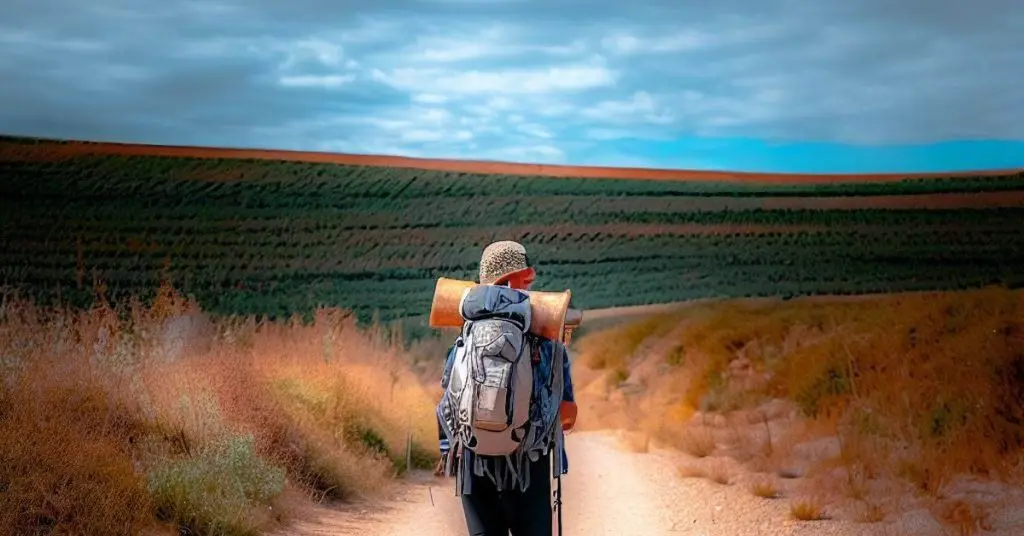
The route from Los Arcos to Logroño covers a distance of approximately 28 kilometers. The terrain is mostly flat, with some gentle slopes and a few steep descents. The route takes walkers through beautiful countryside, including vineyards, olive groves, and fields of sunflowers. Along the way, pilgrims will encounter several small towns and villages, including the historic town of Viana.
The route begins in the town of Los Arcos, which is known for its medieval architecture and historic landmarks, including the Church of Santa Maria and the Palace of the Kings of Navarre. From Los Arcos, the route follows a well-marked path through rolling hills and farmland, passing through several small hamlets along the way.
As the route approaches Viana, walkers will catch their first glimpse of the town’s imposing fortifications, which date back to the 12th century. The town is home to several historic landmarks, including the Church of Santa Maria and the Palace of the Constable, which is now a museum.
Leaving Viana, the route continues through picturesque countryside, passing through vineyards and olive groves before arriving in the town of Logroño. The final stretch of the route takes walkers along the banks of the Ebro River, offering stunning views of the surrounding landscape.
Overall, the route from Los Arcos to Logroño is a relatively easy walk, with few challenging sections. The scenery is beautiful, and there are several historic landmarks and cultural attractions along the way, making it a popular stage for pilgrims on the Camino Francés.
Points of Interest
One of the main attractions on this stage is the Monastery of Irache, located approximately 7 kilometers outside of Los Arcos. This ancient monastery is famous for its wine fountain, where pilgrims can stop to fill their water bottles with free wine. Other notable landmarks along the way include the 16th-century Gothic church of Santa María la Real in the town of Azofra and the 16th-century Baroque church of San Juan Bautista in the town of Navarrete.
Camino-related Services
Pilgrims walking this stage will find a range of services and amenities along the way, including accommodations such as hostels, guesthouses, and hotels. The towns and villages along the route also offer restaurants, cafes, and shops selling supplies for the journey, such as walking poles and maps. Medical facilities and pharmacies are also available for any emergencies.
Alternative Routes
For those looking for a shorter route, there is an alternative path that takes pilgrims from the town of Torres del Río to Logroño, bypassing the town of Navarrete. This route covers a distance of approximately 20 kilometers and follows mostly flat terrain.
Overall, the 7th stage of the Camino Francés offers a mix of stunning scenery, historical landmarks, and practical amenities for pilgrims. The diverse terrain and cultural attractions along the way make this stage a unique and memorable experience for all who walk it.
Best Time to Walk
The best time to walk this stage of the Camino Francés is during the spring and fall when the weather is mild and the landscape is in full bloom. The summer months can be hot and crowded, while the winter months can be cold and snowy, making the route more challenging for walkers.
Taking the Bus from Los Arcos to Logroño: A Guide
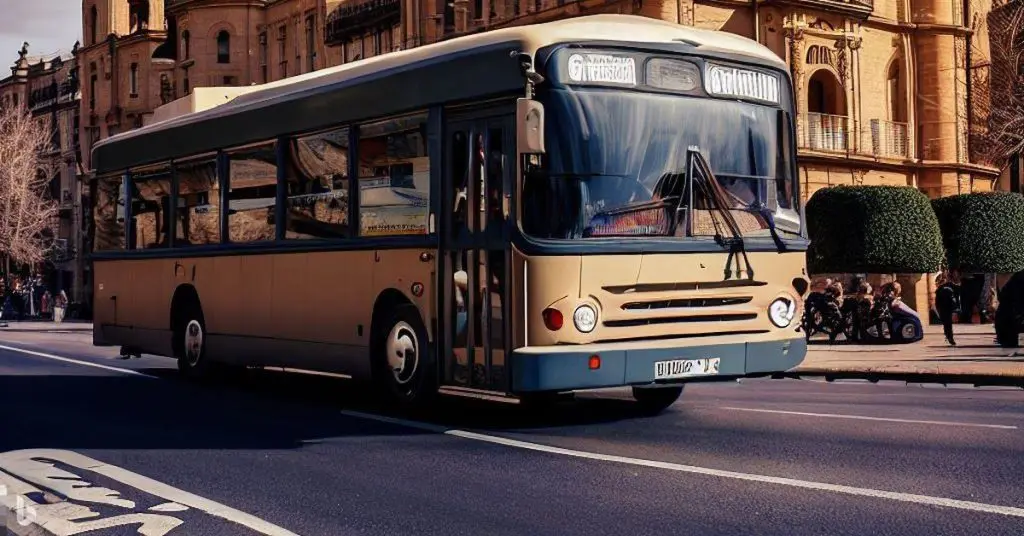
Are you planning to take a break from walking the Camino Francés and take the bus from Los Arcos to Logroño? Here’s a guide to help you navigate your way through this easy and convenient mode of transportation.
Introduction
Los Arcos and Logroño are two towns along the Camino Francés. While some pilgrims prefer to walk the entire distance between these towns, others opt to take the bus for various reasons. Whether it’s to rest their feet, to save time, or to see more of the surrounding area, taking the bus from Los Arcos to Logroño is a practical option.
Bus Schedule and Ticket Information
The bus from Los Arcos to Logroño is operated by Autobuses La Estellesa. The bus departs from the Los Arcos bus station, located near the town center, and arrives at the Logroño bus station, which is also centrally located. The journey takes approximately 45 minutes, depending on traffic.
The bus schedule varies depending on the season, with more frequent services during the peak pilgrimage season (June to September) and fewer services during the low season (October to May). It is advisable to check the schedule in advance, especially if you are traveling during the low season.
Tickets can be purchased online or at the bus station before departure. The price of a one-way ticket is approximately €5-€6, depending on the time of day and season.
Boarding the Bus
When boarding the bus, make sure to arrive at the bus station at least 15 minutes before departure. Check the bus schedule to ensure that you are boarding the correct bus, as there may be multiple buses departing around the same time.
When you board the bus, present your ticket to the driver and choose a seat. The bus is usually equipped with air conditioning and comfortable seats, making for a pleasant journey.
Arrival in Logroño
Once you arrive at the Logroño bus station, you will be in the heart of the city. From there, you can easily walk to your accommodation or explore the city’s many attractions. The bus station is located near several hotels, restaurants, and shops, making it a convenient starting point for your Logroño adventure.
Alternatives to Taking the Bus
While taking the bus is a convenient option, some pilgrims prefer to continue walking the Camino Francés between Los Arcos and Logroño. This section of the route is relatively flat and features stunning views of the surrounding countryside. If you do decide to walk, there are several albergues and other accommodations along the way.
Alternatively, you can also take a taxi from Los Arcos to Logroño. Taxis are readily available at the Los Arcos bus station and offer a more personalized and flexible mode of transportation, although they are more expensive than the bus.
Taking the bus from Los Arcos to Logroño is a convenient and practical option for pilgrims on the Camino Francés. By following this guide, you can easily navigate your way through the bus system and arrive in Logroño ready to continue your pilgrimage or explore the city.
Camino Francés Diary: Route segment: 7
Tuesday 3rd October 2000
Today I walk the Camino Francés again with Caroline. She is faster today and is already ahead of me on the path. The path here is very straight and the sun is very low so our shadows are long.
Today is going to be another hot day and Caroline is having trouble with her knee so we take to the road where it threatens to start climbing up and down. The road goes through “Torres Del Rio” and we stop for something to drink and eat. There is a fancy bar here and it looks open but when we try to go in it is closed. Caroline buys some “Doritos” and coke and has that for a snack.
I am beginning to notice that the Spanish have a passion for building towns on the tops of hills. A comment about this to Caroline and she says that is because, when they were built, they had to be defensible from the moors or whoever. Geordie turns up by himself and I wonder why, but I do not find out the reason.
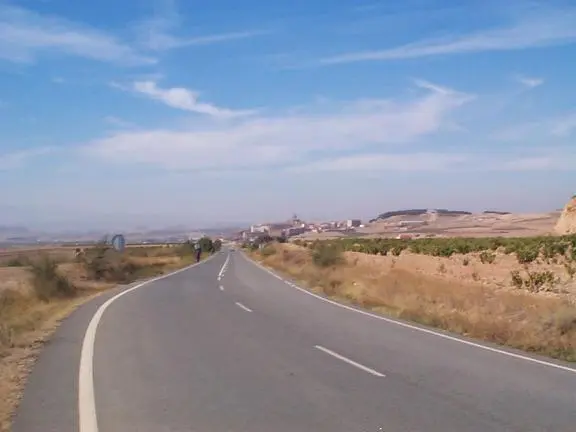
Later, on the way into Viana, I suddenly I see a car come off the road onto the path beside Caroline. I fear the worst and try to speed up to catch her. But it is a police car and they are looking for “Daniel” who has lost his wallet somewhere. I find out later that he walked so far on the road, thought he had lost his wallet and got a bus back to the start and re-walked it again. But his wallet was with him the whole time, buried somewhere in his camino backpack. We joke with him later that he is a “wanted criminal” and he takes it
good-naturedly.
The heat is getting oppressive now and I did not put on any sunscreen not having any and I will pay for this dearly later when I start to “cook” badly. There is a grove of trees next to a church and we stop there. Caroline has decided that she is going to take a siesta and adjusts her backpack as a pillow.
We eventually reach Logroño and find the refuge fairly easily. I have made some comment earlier in the day about her not showing any bare skin and she says it is because she has a sun allergy. There is a small fountain and Caroline has taken off her shoes and paddled in it. After a bit of coaxing I do the same and although it is bitterly cold it is the most refreshing footbath I have ever had. My feet feel marvellous afterwards and I assume it was the numbing effect of the cold water.
I am “cooked” now and after a shower I go off to find a “Farmacia” to get some sunscreen.
We have beds next to the Spanish couple and we agree to go out that evening for a meal. It is the first full Spanish meal I have had in a city and it seems oily to me. In any case, I am hungry and look forward to settling down for the evening with a good book.
Destination: Logroño
Logroño is a lively and modern city in the north of Spain, famous for its wine culture, rich history, and vibrant street life. It is the capital of the La Rioja region and attracts visitors from around the world who come to experience its unique blend of old and new.
Location and History
Logroño is located in the Ebro River valley, nestled among rolling hills and vineyards. The city has a rich history that dates back to the Roman Empire, when it was an important trading hub and stopover for travelers. Over the centuries, it grew in size and importance, becoming a center for winemaking, agriculture, and industry. Today, it is a bustling city that still retains much of its traditional charm.
Points of Interest
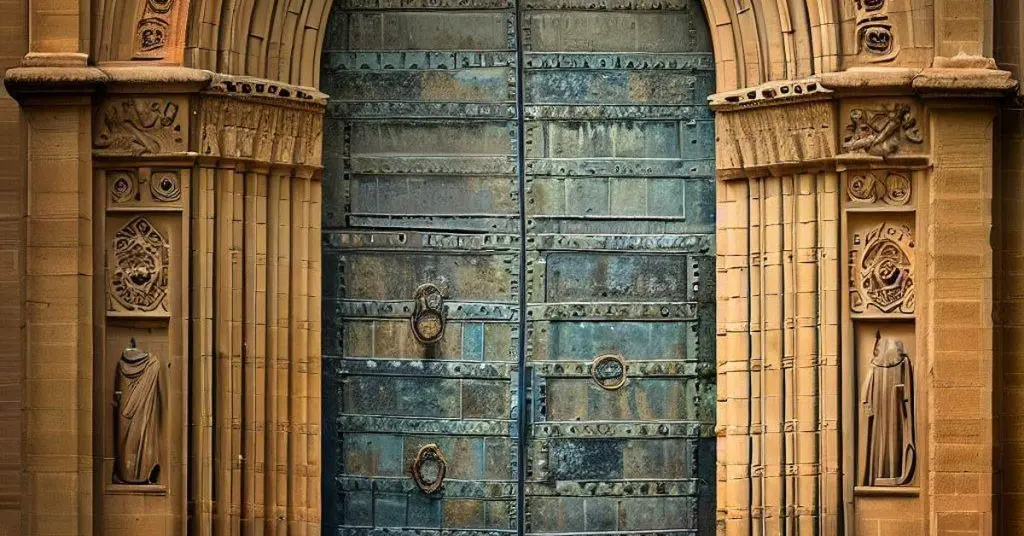
Logroño has many points of interest that will appeal to visitors of all ages and interests. One of the most iconic landmarks in the city is the Cathedral of Santa María de la Redonda, a beautiful Gothic-style church that is over 500 years old. Visitors can also explore the historic streets of the Old Town, which are lined with shops, restaurants, and cafes that offer a variety of local specialties. Another popular attraction is the Calle Laurel, a street famous for its pinchos bars, which serve delicious small plates of food that are perfect for sharing.
Wine Culture
Logroño is the capital of the Rioja wine region, which is known worldwide for producing some of the best wines in Spain. Visitors can experience the city’s wine culture by visiting one of the many wineries or wine bars in the area, where they can sample the region’s famous reds, whites, and roses. The city also hosts several wine festivals throughout the year, including the popular San Mateo Festival in September, which attracts wine lovers from around the world.
Gastronomy
In addition to its wine culture, Logroño is also famous for its delicious cuisine. The city is known for its pinchos, which are small tapas-style dishes that are perfect for sharing with friends and family. Some of the most popular pinchos bars in the city include Bar Soriano, Bar Angel, and Bar La Tavina. Visitors can also sample traditional Riojan dishes such as lamb chops, asparagus, and chorizo, which are all made with locally sourced ingredients.
Camino-related Services
Logroño is a popular stop on the Camino de Santiago pilgrimage route, and it offers a range of services and amenities for pilgrims. Accommodation options include budget-friendly hostels and private rooms, and visitors can also find restaurants, cafes, and shops selling hiking gear and souvenirs. Medical facilities and pharmacies are also available for necessary care and assistance.
Logroño is a city that offers a unique and memorable experience for visitors. Its wine culture, traditional cuisine, and historic landmarks make it a popular destination for travelers from around the world. Whether you’re a wine lover, a foodie, or a pilgrim on the Camino de Santiago, Logroño is a city that is sure to leave a lasting impression.
